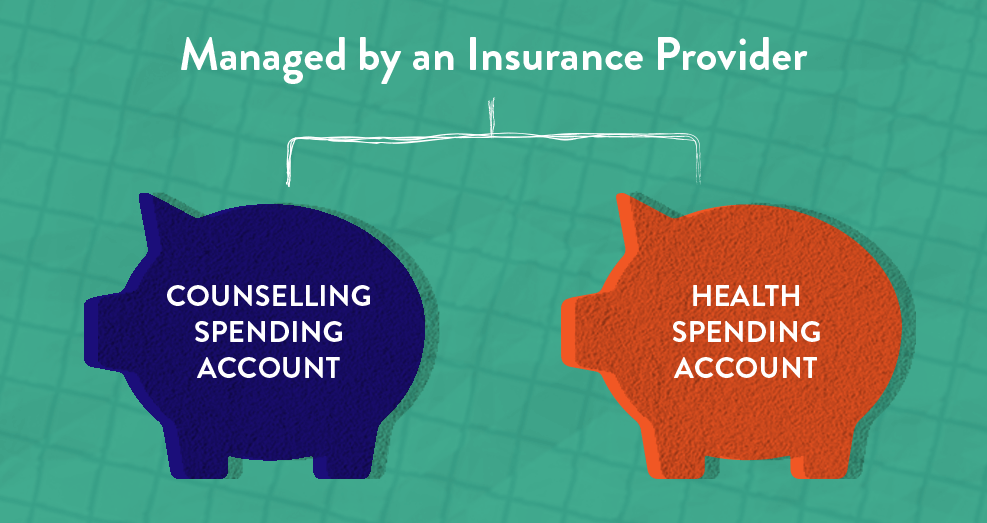Mental health issues and their effect on employees and the workplace has increasingly become a mainstream topic over the past few years, and for good reason.
Statistics show that 1 in 5 Canadians experience issues with mental health, with mental illness becoming the number one cause of disability. With that, comes time away from work, which leads to serious business implications. In fact, psychological health problems cost the Canadian economy an estimated $51 billion per year, with $20 billion stemming from work-related causes.
Obviously, large organizations have the resources to withstand losing one or two employees for a period of time, but what about small businesses where one or two people make up 10-15% of the team?
Being in that position ourselves, we didn’t wait for this to happen. Instead, we had to be proactive in how we handled the psychological well-being of our staff.
What’s a Small Business To Do?
It seems like a daunting task for small businesses to tackle mental health. Psychological safety surveys aside, I thought you’d need a dedicated HR department and a fat chequebook to set up the necessary resources and programs for employees to monitor and manage their mental health.
Turns out that’s not the case, and equipping your business with the right plans and resources was easier than I’d expected. Here’s how it all played out:
Total Health includes Mental Health
First things first. At the top of our company, we needed to make the statement that ‘total health’ would include mental health and that a physical injury or ailment would be viewed in the same way as a mental one. The more committed we are to the ‘total’ health of our employees, the more productive the team is, and that’s what’s best for our company.
Talk to an HR Expert
Since we run lean as a 12-person organization, we don’t have a dedicated HR department. Instead, we talk HR as a team and appoint one person as the lead in the same way as we do for innovation and operations. These functional area leaders aren’t responsible for “doing-it-all”, rather, they’re responsible for strategizing how we’ll approach big-ticket items.
When it came to addressing, monitoring, and treating issues involving mental health, our appointed HR leader reached out to a specialist to design a program tailored to Stryve. Our HR consultant advised us to balance our Health Spending Account (HSA) and Counselling Spending Account (CSA) amounts and consider what a typical counselling schedule may look like.
Separate the Counselling Spending Account from the Heath Spending Accounts
Our Counselling Spending Account funds are separate from the Health Spending Account (HSA) allocated to each of our employees. By splitting these funds rather than grouping them together in a larger HSA, we’re placing special importance on seeing a counsellor for mental health. As we’ve learned from older generations, mental health is often the quickest thing to be suppressed or swept under the rug. We felt that grouped with the HSA, employees would neglect their mental health in favour of dental appointments, prescriptions, and massages, leaving mental health concerns unattended and unresolved.
Additionally, separate accounts don’t just highlight the importance of seeking counselling, but they highlight the importance of making mental health part of your complete health regiment. Just as you would go do a doctor for a check-up or a dentist for a cleaning, you should routinely check in on your psychological well-being.
Spending Account vs Group Benefits
A Health Spending Account or Counselling Spending Account is different than traditional group benefit premiums. Spending accounts have worked really well for us in terms of budgeting and managing costs effectively. As a company, we pay-as-we-go as opposed to paying monthly insurance premiums that come with traditional group benefit plans. Our employees like the flexibility of these accounts because they can choose how to use their funds, they’re often given more favourable pricing, and they often receive 100% reimbursements on their health-related expenses.
Company leaders need to be open about mental health
It all starts at the top. Those in charge of your organization need to step up and make mental health a priority. Whether that be leading by example or starting a dialogue, company leaders need to get with the times.
At Stryve, we have two company owners, and we’ve each made visits to counsellors to improve our mental health. Not only that, but we’re also comfortable talking about it with our team in an open way. While mental health is nothing new to us, the Counselling Spending Account program is, and we’re excited to see how it helps our team improve and move forward.









